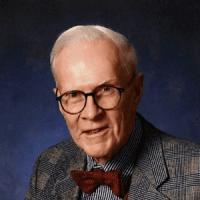Deadlines are deadlines! Perspectives must conform to printers’ schedules which have very little give—though we can occasionally slip in a stop press item. This issue is being put to bed just before the major meetings in mid-March to mid-April of the principal governing and policy committees of the Association. This column is therefore devoted to ongoing, nuts-and-bolts activities that have engaged headquarters staff during the past four weeks.
By far the most important event of the period was the annual convening of the Nominating Committee of the Association, February 18–20. As members know, our constitution entrusts to the nine elected members of this Committee the difficult task of putting together the 1988 ballot. On this page you will see the fruit of their labors, an impressive slate of candidates for president-elect, for vice president for the Teaching Division, for two Council members, for members of each of the three Divisions, for three members of the Nominating Committee itself, and for a member of the Committee on Committees. In addition, the Nominating Committee recommends to the Council names of distinguished historians to be considered for the AHA’s Award for Scholarly Distinction. Weighing qualifications of possible nominees for elective office with due consideration to the claims of merit and with balance and representation of our diffuse membership is a difficult and grueling task. That nine able historians can come up year after year with such an impressive ballot does honor both to the Association’s constitution and to the dedication of the Committee members.
The AHA is an active participant in the principal lobbying organization for the National Endowment for the Humanities, the most important funding organization for history and historians. During February, a staff representative joined the director of the National Humanities Alliance and Stan Katz, the President of the ACLS, in a call on Congressman Sid Yates (D-IL), chair of the House of Representatives Appropriations subcommittee that deals with NEH appropriations. Congressman Yates, who is supremely knowledgeable about the Endowment and the appropriations atmosphere, listened sympathetically to our collective representations about the state of the humanities and the growing importance of NEH. With his advice we were able to choose authoritative witnesses for the appropriations hearings in late March, who would be able to strengthen our plea.
Although the joint AHA-American Political Science Association effort to celebrate the bicentennial of the U.S. Constitution, Project ’87, is winding down, AHA headquarters participated in a two-day federal Bicentennial Commission workshop on ongoing plans for bicentennial activities over the next three years—celebrating ratification, the founding of the federal government, and ratification of the Bill of Rights amendments. Another bicentennial activity engages headquarters attention also—the bicentenary of the French Revolution, and a meeting was held with the newly installed director of the American Committee on the French Revolution.
The next issue of Perspectives will carry a report on the conference being held March 10–12 on Women in the Progressive Era at the Smithsonian’s National Museum of American History. Suffice it here to note that a great deal of staff time in the weeks preceding the event was devoted to final arrangements. Thanks to generous contributions from a number of grantors, including NEH and the Rockefeller Foundation, this important conference is serving as a scholarly preview for a later Museum exhibit on the subject.
In-house headquarters meetings are numerous and usually leave no footprints on the beach above the tide-line. Two should be noted here, however, as they will, we hope, impinge on our members and on academic history departments hereafter. We are completing arrangements to automate (computerize) the AHA’s annual Guide to Departments of History1 one of the most useful reference books we publish. Since only about 20 percent of the over 10,000 historians listed by department and university move from one year to the next, it has long been a candidate for desk-top publishing, and we now have found the resources to make the changeover. Under the able leadership of its editor, Maureen Vincent-Morgan, its scope has increased by 50 percent over the last four years and is now the most useful current directory of almost all of the leading academic institutions’ history departments.
With the authorization of the Council, headquarters staff are busily negotiating with site-cities for the 1990 annual meeting, which we hope will affect some 4,000 of our members the year after next. The candidates are presently (alphabetically) Baltimore, New York, and Washington.
This work is licensed under a Creative Commons Attribution-NonCommercial-NoDerivatives 4.0 International License. Attribution must provide author name, article title, Perspectives on History, date of publication, and a link to this page. This license applies only to the article, not to text or images used here by permission.

